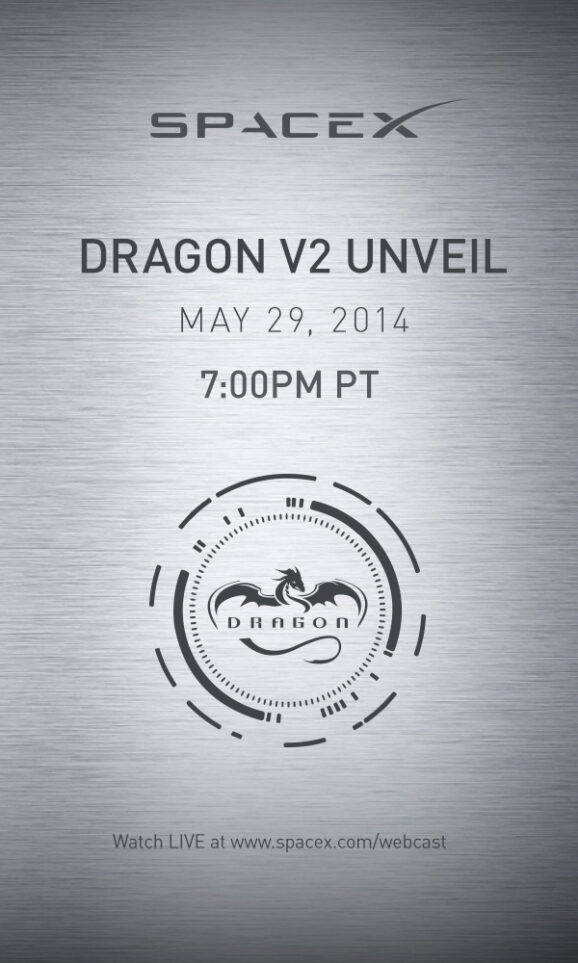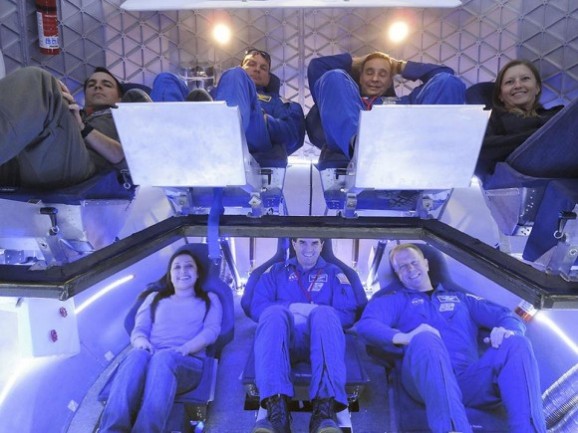SpaceX Will Unveil The Dragon V2 Spacecraft Tonight
 What are you doing tonight at 10:00 PM EST? For most of us science and tech geeks, that’s a rhetorical question. We’ll be gathered around our computers, watching SpaceX unveil the Dragon V2—the next generation of the Dragon Spacecraft. This iteration isn’t for shuttling cargo to the ISS, it’s for taking astronauts there, and beyond.
What are you doing tonight at 10:00 PM EST? For most of us science and tech geeks, that’s a rhetorical question. We’ll be gathered around our computers, watching SpaceX unveil the Dragon V2—the next generation of the Dragon Spacecraft. This iteration isn’t for shuttling cargo to the ISS, it’s for taking astronauts there, and beyond.
Dragon has been proving its worth for years, becoming the first commercial spacecraft to dock with the ISS and serving as regular cargo service to the station. But SpaceX CEO Elon Musk has always had grander plans. Since the U.S. currently relies on Russian Soyuz capsules to get astronauts into space—a method of transportation that won’t be available to us for much longer—now is the perfect time to reveal the spacecraft that may take its place and restore the U.S.’s ability to launch its own astronauts into space by 2017. The V2, which Musk will unveil himself tonight via the webcast, is also known as the “Space Taxi.”
 Dragon, which is launched by SpaceX’s Falcon 9 rocket, was first developed under a Commercial Resupply Services contract with NASA for cargo runs that extends through 2016. The new Space Taxi was designed with funding from the space agency’s Commercial Crew Program and could carry up to seven astronauts, as well as cargo, to the ISS. Last month, in response to the news about Russia bailing on the ISS and potentially blocking US access to it, Musk tweeted about the Dragon V2:
Dragon, which is launched by SpaceX’s Falcon 9 rocket, was first developed under a Commercial Resupply Services contract with NASA for cargo runs that extends through 2016. The new Space Taxi was designed with funding from the space agency’s Commercial Crew Program and could carry up to seven astronauts, as well as cargo, to the ISS. Last month, in response to the news about Russia bailing on the ISS and potentially blocking US access to it, Musk tweeted about the Dragon V2:
Sounds like this might be a good time to unveil the new Dragon Mk 2 spaceship that @SpaceX has been working on w @NASA. No trampoline needed
— Elon Musk (@elonmusk) April 29, 2014
NASA’s Commercial Crew Program is also helping to fund two other manned spaceships—Boeing’s CST-100 and Sierra Nevada’s Dream Chaser. The three manned spaceships will compete for the next round of NASA contracts, which will be awarded later this summer. All three spacecraft have been ticking off the required milestones, but their production and testing has been stymied by Congress, which continues to reduce NASA’s budget. Further test flights have been delayed until 2017. The deteriorating situation with Russia may prompt a reconsideration of those budget cuts, but in the meantime, SpaceX shows no signs of slowing down.












